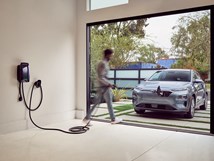Second-Generation Acura Self-Driving Car Gets Improved Sensors
Honda Motor Co.’s Acura luxury unit has updated its prototype self-driving vehicle with new software and hardware systems that enable more complex testing.
#Acura
Honda Motor Co.’s Acura luxury unit has updated its prototype self-driving vehicle with new software and hardware systems that enable more complex testing.
Based on the RLX Sport Hybrid SH-all-wheel-drive sedan, the second-generation model features a new array of cameras, radar and laser sensors. It also gets more powerful processors and graphic imaging technology to better manage autonomous driving algorithms.
Acura says the vehicle employs a "sensor fusion" strategy to improve reliability and accuracy by comparing data from the various sensors. Radar is used to pinpoint the position and velocity of nearby objects, while cameras identify their size and shape.
The roof-mounted sensors also are more compact and less conspicuous than those of the first prototype. And the design of the second-generation processing units has better heat management and more compact cables and circuitry.
Acura will test the RLX at the special designed GoMentum Station facility in Concord, Calif. It aims to introduce “highly automated” vehicles in the early 2020s.
RELATED CONTENT
-
Flying Car Flight of Fancy Gets Real
People have been dreaming about flying cars since the early days of the auto and aircraft industries.
-
On Electric Pickups, Flying Taxis, and Auto Industry Transformation
Ford goes for vertical integration, DENSO and Honeywell take to the skies, how suppliers feel about their customers, how vehicle customers feel about shopping, and insights from a software exec
-
Toyota Employees to Aid Michigan V2X Research
Toyota Motor Corp. is encouraging employees at its research and development center near Ann Arbor, Mich., to participate in an on-going program there to test connected vehicle technologies.








